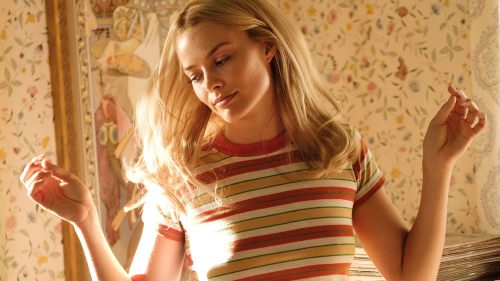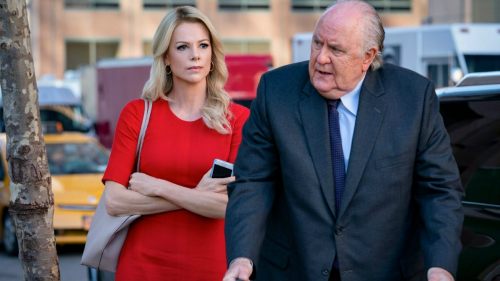MARY QUEEN OF SCOTS: MRAs And Nice Guys In The Elizabethan Era
Mary Queen of Scots comes out soon. Get your tickets here!
(Mild spoilers for 500-year-old politics below.)
In the latest big costume drama, Mary Queen of Scots, we are told the tale of Mary’s life as queen of Scotland while she tries to take the crown of England from Elizabeth. Were it just a discussion between two cousins, the story might have been a simpler one, but given all of the queens’ various constituents, not to mention love and politics, it all gets quite messy. And beyond the constant threats of war from across the border, Mary must deal with these pesky men who constantly try to control her. However, the ways that Mary Queen of Scots represents these naysaying dudes is with a decidedly modern and internet-assisted take on sniveling male stereotypes.
Nearly every historical film needs to be considered an artifact of two times: both the time it was created and the era references. As all art is a product of its own time, created by and designed to be consumed by contemporary audiences, it is impossible to ignore the modern lens through which we look at history. Usually this is most easily recognizable through costuming. Both 1967’s Bonnie and Clyde and 1996’s Romeo + Juliet are prime examples of this revision through fashion. Even recently, Robin Hood featured Maid Marian in a cropped top and Rob (née Robin) wearing a sharp tweet suit. We are so accepting of the sartorial translation to our current trends that it should be no shock to learn some similar changes have been made to the plot and characters of the film to make it more accessible to modern audiences.
Mary Queen of Scots appears to have done just that, but most specifically in regards to the two waves of toxic masculinity that Mary must try to deal with and navigate in her quest to unite England and Scotland.
When Mary (Saoirse Ronan) returns to Scotland after spending most of her life in France, she is ready to reclaim her crown to Scotland and also the rest of England. According to lineage, she is the only rightful heir to the English throne, but her cousin Elizabeth (Margot Robbie) is not too eager to just step aside and let this feisty Catholic take her country from her.
Even in the era of a strong female leader like Elizabeth, Mary is met with men who cannot handle another skirt in the castle. In the film, this is most notably portrayed in John Knox (David Tennant). Just as soon as Mary puts her royal bum on that Scottish throne, Knox starts going on and on about how horrible women are and that they are not fit to lead. He has no real argument there (duh), but he will not drop the cries against any women, regardless of her divine birth, to be the boss of him. In a huff, Knox resigns from the queen’s court and gathers whatever women haters he can find to start his own Elizabethan chapter of Al Bundy’s No Ma’am.
These grumbling misogynists are cut to throughout Mary Queen of Scots to show the opposition that Mary faced from even her own countrymen. But peering in on those meetings is exactly what one can imagine a Men’s Rights Activists’ meeting would be like, or perhaps the same as a sexist Twitter hashtag come to life. They have no argument to structure, other than the fact that they just don’t want a chick in charge. Though there is little doubt that this attitude, and possibly even these meetings took place back then, the fact that it is presented in the film exactly like an internet gathering of angry and aimless men is a way of reframing the sexism posed against Mary in a modern context.
The other version of toxic masculinity Mary encounters in Mary Queen of Scots is possibly the most betraying of them all: the “nice guy.” To clarify this contemporary male stereotype, these are the guys who see “niceness” as currency, not a common decency, and believe they are owed something by women to whom they gift this ersatz respect. The guys who cry “friendzone” because they don’t understand why being friends with a woman hasn’t earned them some sort of chargecard for sex and affection. You know the type.
Unfortunately for Mary, she has one of those types of men in her life, who decides to show his nefarious side at one of her lowest points. Lord Bothwell (Martin Compston) was Mary’s protector and personal guard her whole life. He stuck by her side in France, was her bodyguard in Scotland, and her silent knight (but not really) during her quick and unfortunate marriage to Lord Darnley (Jack Lowden). Not long after that marriage crumbles, her husband is killed during their separation. Within days of being a widow for the second time in her young life, Bothwell storms into her bedroom and demands she marry him. Politically, this certainly made sense for him, and it wasn’t a terrible idea for her either, but the way that it is played in Mary Queen of Scots is straight-up 4chan-style “nice guy.” Bothwell, who had always been her loyal and humble sentinel was suddenly framing his entire life’s work as something she owed him for. Big time. Why else would he be watching over this woman, day in and day out, for decades if it didn’t mean he was filling in an imaginary punch card, exchangeable for sex and affection? Never mind that being the escort of royalty was a pretty sweet gig back in those days. Bothwell was owed her love because he was nice to her.
Both the MRAs in IRL and the “nice guy” storming the castle serve to reframe the sexism Mary had to endure through our modern experiences with toxic men. Overall the effect is to make Mary, the divinely chosen ruler of Scotland and England, a relatable character. There is no reasonable reason that an average, 2018 women would have anything in common with this 1560s monarch. But by positioning her against these archetypes of contemporary misogyny, it suddenly gives us a way to empathize. I’ve never had to try to usurp the queen of England, but I have had to fend off my own batch of chauvinists online. (Thankfully, I have not had to endure those attacks in an Elizabethan corset. Ouch.)



